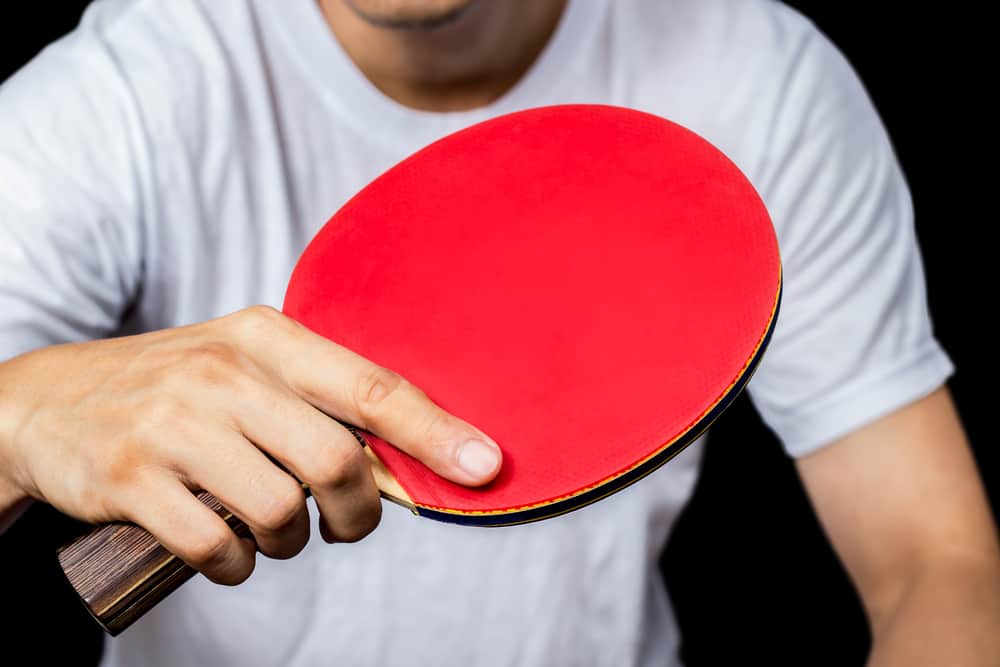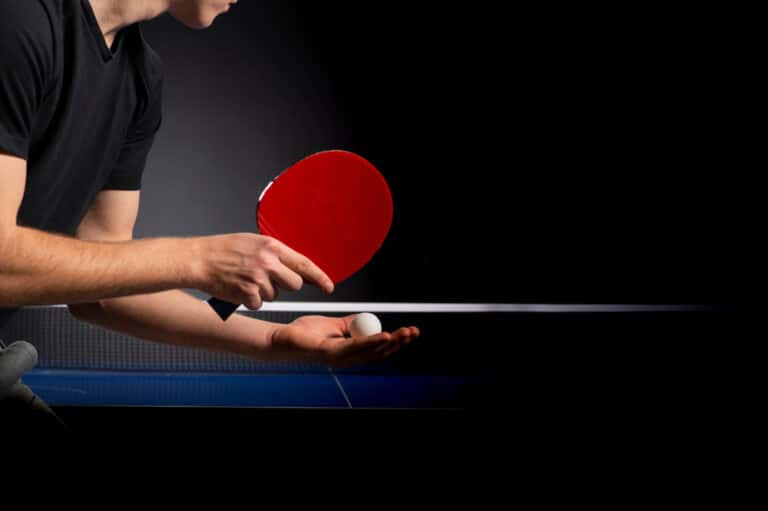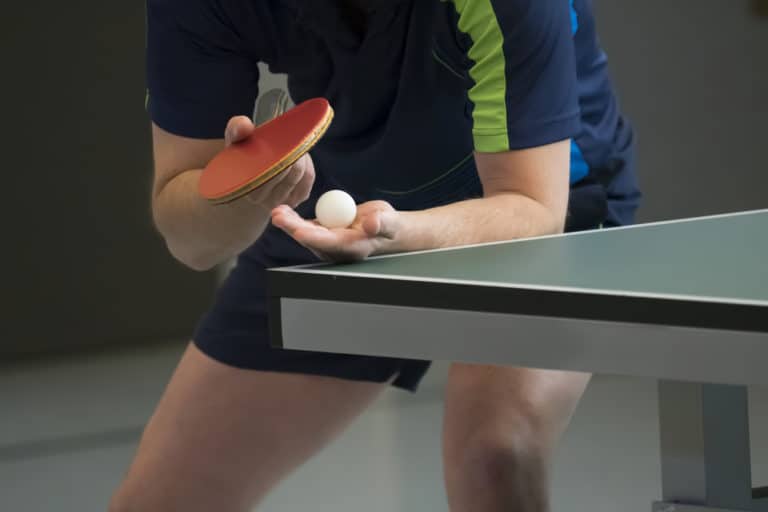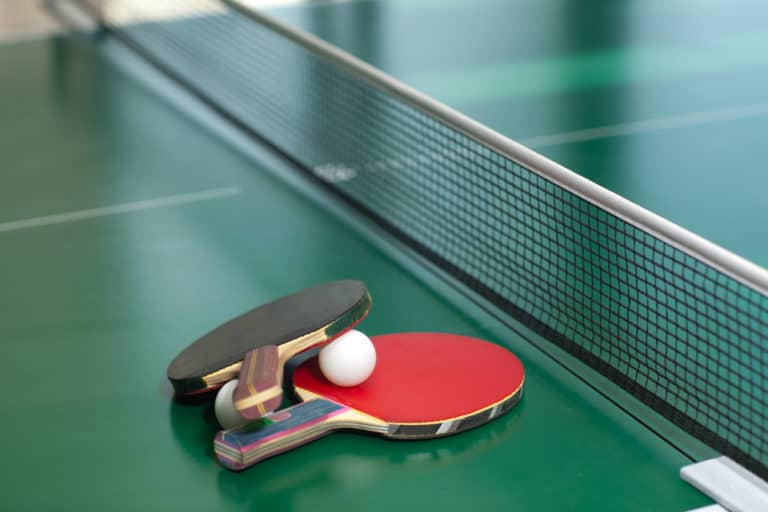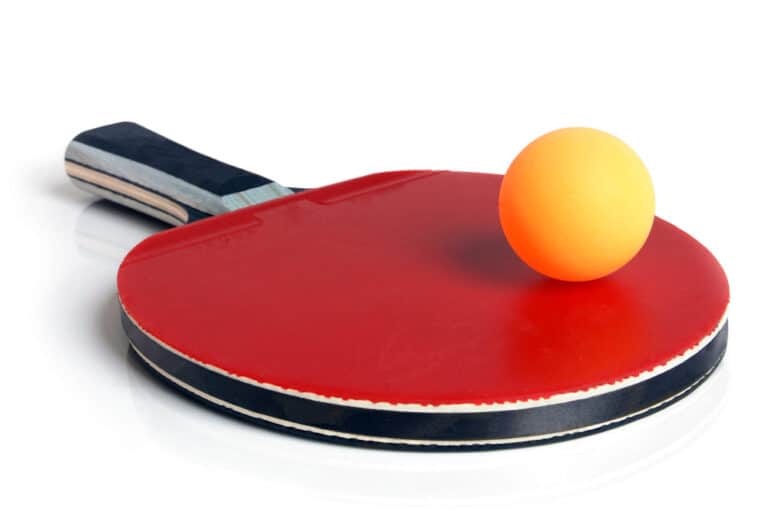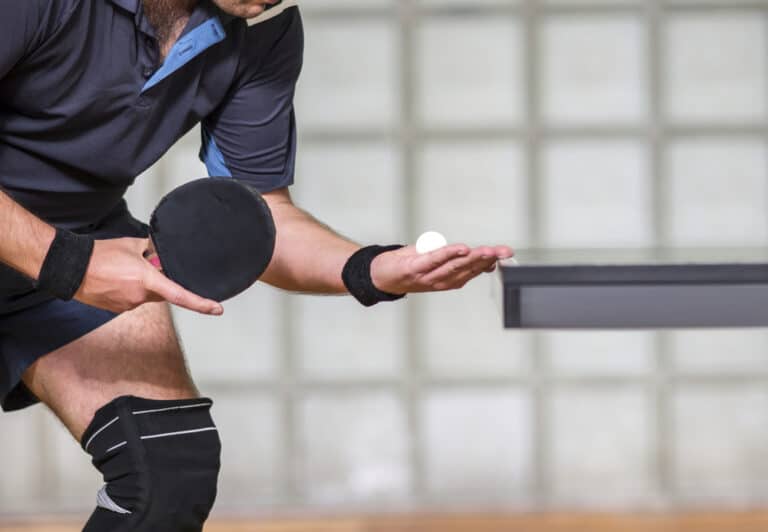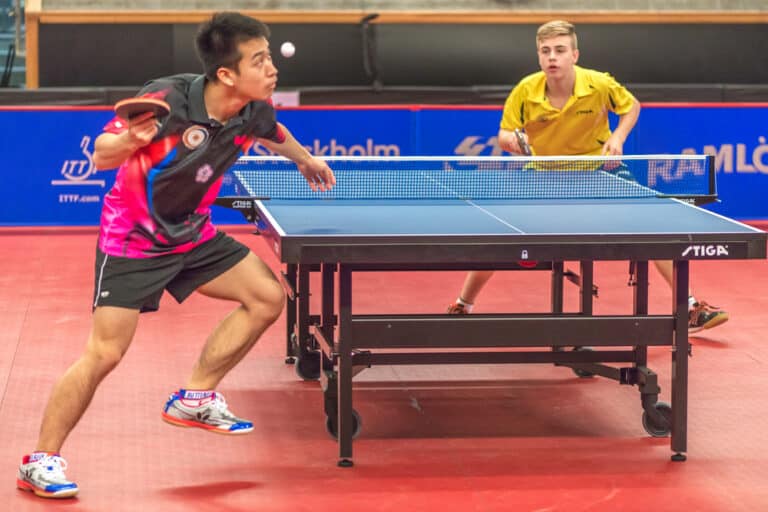What Is The Most Common Grip In Table Tennis?
Various grips, and even alterations to popular grips, exist for table tennis players to explore and practice. As with most sports, the different kinds of grips and alterations yield advantages and disadvantages, making them ideal for playing certain challenging shots for different players, but which grip is the most common and why?
The Shakehand grip is the most sought-after grip for western table tennis players but has also grown in popularity in other countries. Although variations of the grip exist, the basic form is to give the bat a “handshake” with the index finger resting on the bottom of the blade.
However, some types of grips are more popular among players from different countries due to the difference in style and strategic approach to the game. Hence, we can delve into the details as to which grips are more popular for specific styles and strategies and what advantages they hold.
Why Is The Shakehand The Most Popular Grip?
The two aspects that make the Shakehand the most popular grip are the overall balance and comfortable nature. We have to keep in mind that although you might see some extraordinary grips in professional table tennis tournaments, various players on different competitive levels prefer the Shakehand grip as it is the most efficient for exercising the basics.
Firstly, griping the rubber with your palm and your fingers is the most natural way to grab an object making the grip extremely comfortable and effortless. Due to its comfort, many players start with the Shakehand grip, as learning the basics with such a natural form can later advance to more technical grips for specific purposes and styles.
Secondly, the grip provides the best balance for playing various shots and techniques because of its comfort. Even on a professional level, the Shakehand grip’s comfort results in an overall balanced feel that provides the players with more ease when playing different kinds of shots.
Therefore, the Shakehand grip is the ‘easiest’ way to learn the basics and master the shots. Its natural balance provides control and power, an ideal grip for an offensive and defensive strategy.
The grip provides power when playing attacking shots with precision and speed. In addition, players can also play spinning shots with accuracy and ease as the grip has enough control to switch between harder and more delicate shots comfortably.
What Are The Alterations To The Grip?
The two popular alterations to the Shakehand grip are the “shallow” and the “deep” grip. As the title suggests, the main difference between the grips is where you place your thumb. Regarding the shallow grip, your thumb will rest on the rubber, whereas the deep grip requires the thumb to rest on the blade pointing upwards.
Of course, the difference between these grips provides players different benefits. The minor alteration that differentiates the grips can quickly be done by a player during a match, making various options available.
What Are The Advantages Of The Shakehand Grip?
The slight alteration to the Shakehand grip can significantly affect the paddle’s overall feel, resulting in different advantages depending on the style and strategy. Let’s start with the “shallow” grip:
- The shallow grip has a looser wrist meaning it is more effective when playing spin shots and provides more power when attacking. A flexible wrist is ideal for playing offensive shots as it allows players to use their back and forehand with ease without losing power.
- The deep grip is advantageous for the opposite reason; it has a firmer wrist. During a match, there will be moments where accuracy is more vital than power and spin. Although the deep grip does not have as much flexibility, it can still produce powerful shots that can be more accurately placed on the table for a defensive approach.
What Are The Disadvantages Of The Shakehand Grip?
The most significant disadvantage of the Shakehand grip, including the alterations, is the crossover point. Due to the grip allowing you to play with both the backhand and the forehand, there are moments where players are indecisive about the best option.
Offensive players often exploit the crossover point by playing the ball in an uncomfortable position to confuse their opponent about the best possible receiving shot. Although the disadvantage is ever present, it is not impossible to address.
The famous German player ‘Timo Boll’ overcame this disadvantage on more than one occasion by quickly switching the paddle to his other hand to return a difficult shot. Switching the paddle is a near impossible solution for even the most experienced players and is also considered an extremely impressive receiving shot.
What Is The Most Common Eastern Grip?
As previously established, the Shakehold grip is a popular western grip that also grew in popularity among players from other countries; however, eastern players have preferred grips for many years that yield its benefits.
A common eastern grip, and the second most popular grip overall, is known as the Penhold grip. The name derives from the method of holding the paddle, which is similar to your grip if you were writing with a pen.
You place the paddle between your fingers as if the blade’s tip was the pen’s point. Your thumb and index finger will be just below the blade and above the handle, whereas the rest of your fingers will be resting on the opposite side of the blade.
The Penhold grip is quite different from the Shakehold, and players who prefer using it have a different approach and style of playing compared to the Shakehold grip players. Although the form of the hand is not as natural or comfortable as the Shakehold, the difference in grip provides players with various opportunities to play certain shots more effectively.
There are three different forms of the Penhold grip popularly known as;
- The Chinese Penhold grip,
- The Korean Penhold grip,
- & The Reverse Backhand Penhold grip.
Each of these different forms was developed for its unique purpose regarding a specific style or strategy; therefore, they produce their benefits and drawbacks professionally.
The Chinese Penhold Grip
The Chinese Penhold grip, most commonly used by Asian players, does not provide the same power as the Penhold grip but is far more flexible. The main advantage of a more flexible wrist is the increased efficiency in putting a spin on the ball, whether for serving or attacking.
In addition, most players who prefer this grip play close to the center of the table as switching between the forehand and the backhand is easily done by bending the wrist. As the grip allows players to increase their overall speed of playing different strokes, they stay close to the center to put pressure on the opponent.
Although the grip can increase spin and provide a solution to the crossover point, it is not the most comfortable grip for playing accurately or powerfully with the backhand side. If an opponent constantly plays to the backhand side of a player who uses the Chinese grip, the latter will lose a lot of energy and stamina to try and continuously play those strokes.
The Japanese/ Korean Penhold Grip
The main difference between the Korean and Penhold grip is that the fingers on the opposite side of the blade are straightened and penned instead of curled and relaxed. The extended straight fingers increase the power of the forehand resulting in effective spins and controlled attacking shots.
The extended fingers also add to the overall control, yielding more accurate shots when attacking and serving, especially with a spin. However, similar to the Chinese grip, it’s challenging to play backhand shots, like the backhand topspin, due to the restricted movement of the grip.
Not only do the extended fingers restrict the overall movement of the backhand, but the grip has less reach on the backhand than the Penhold grip meaning players will have to move around the table more often than necessary to cover more ground with the forehand.
Reverse Backhand Penhold Grip
It can be argued that the Reverse Backhand Penhold refers more to the type of shot than the grip itself, as there is no significant difference between the grip of the Reverse Backhand and the Chinese Penhold Grip.
The reverse backhand specifically refers to using the opposite side of the paddle to play backhand shots instead of just switching the wrist and playing with the front as you would with the Chinese grip. The grip is often used to play short shots at the center of the table with speed and accuracy to strengthen the backhand side.
In addition, you can use a combination of the Chinese grip and the Reverse Backhand to advance your general skill and playing method as it’s effortless to switch between them, although it is difficult to master.
It’s vital to note that the position of the Reverse Bachand grip is ideal for short balls, but it is difficult to gain height, meaning it’s challenging to hit the ball over the net. Furthermore, if players prefer to use this grip, the disadvantage would be the same as the Penhold grip, namely the crossover point.
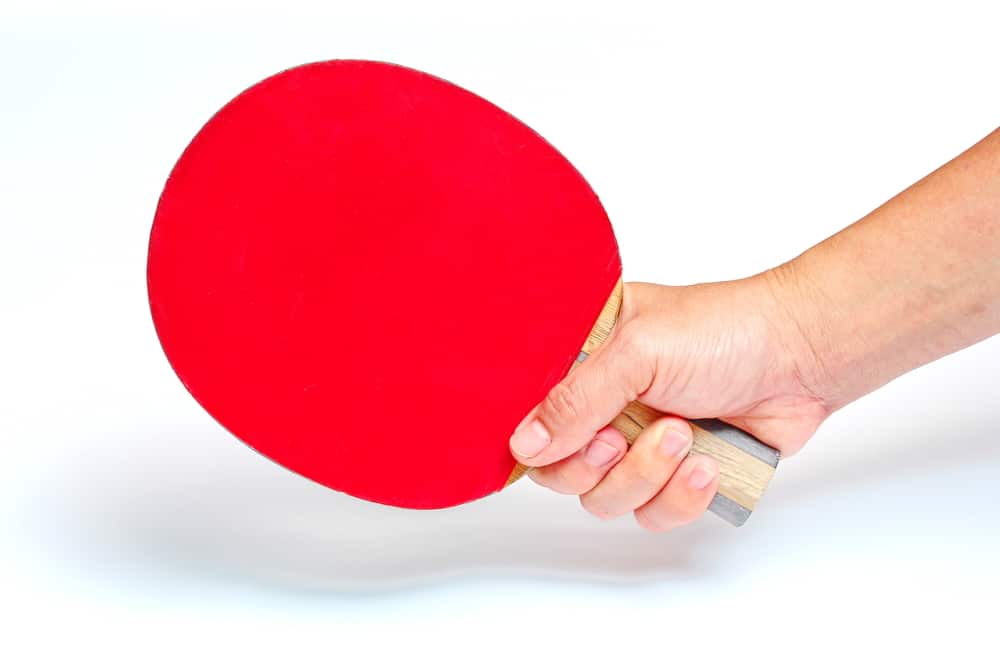
Are There Other Types Of Common Grips?
Besides the popular Penhold and Shakehand grips, others can also be considered common, although they are more advanced and particular. The Shakehand and Penhold are the most common grips because they provide versatility and comfort for most shots and serves during a professional game.
Therefore, if you are up against an opponent that plays with a different style or uses specific techniques, you’ll be able to use both those grips to adjust to the game and alter your strategy and methods with relative ease.
On the other hand, more advanced players use particular grips to differentiate themselves from the other players to provide themselves with an upper hand when playing professionally.
Common grips that are a bit more particular include:
- The V-grip
- And the Seemiller grip.
Due to the above-mentioned grips being more particular, they were developed for unique purposes and goals.
The V-Grip
The name, V-grip, derives from the form of the fingers that grip the paddle. You place the bat between your index and middle finger, with both fingers curled and resting just below the blade.
It is claimed that the grip provides more control as the hand’s position puts more tension on the larger muscles than the smaller ones. The extended reach can also be beneficial to playing more powerful shots.
However, it’s not a well-documented grip at a professional level. It is especially not taught on a massive scale, meaning it will be difficult to train professionally with this grip. Furthermore, when shots are being played to the elbow, the crossover point is still a barrier that needs to be overcome.
The Seemiller Grip
The Seemiller grip was named after the professional player ‘Dan Seemiller’ who developed the grip and achieved a lot of success during tournaments. Similar to the Shakehand grip, you place the handle in the palm of your hand but then turn the blade slightly to grip the sides with your index finger and thumb.
Due to the unorthodox nature of the grip, you only use one side of the blade to play both forehand and backhand strokes. Since the same side is used, it provides a solution to the crossover point as there is no point of indecision.
In addition, the grip provides ideal wrist movement resulting in powerful shots, and the blade’s position makes blocking shots easier. On the other hand, although the same side can be used to play the backhand, the wrist movement does not allow for great power or spin on that side, making it difficult to play the attacking shot on the backhand side.
Conclusion
For players of all levels and skills, the Shakehand provides the most comfort and versatility, making it the grip with the most balance. Due to the beneficial balance, it’s the easiest grip to learn new skills as well as master more advanced shots.
References
- https://tennisclay.com/table-tennis-grip/
- https://www.pongboss.com/tips/table-tennis-grip-types/
- https://www.tutorialspoint.com/table_tennis/table_tennis_types_of_grips.htm
- https://www.liveabout.com/japanese-korean-penhold-grip-3173840
- https://pingpongpicks.com/different-types-of-table-tennis-grips/#7_Reverse_Backhand_Grip
- https://gregsttpages.com/

